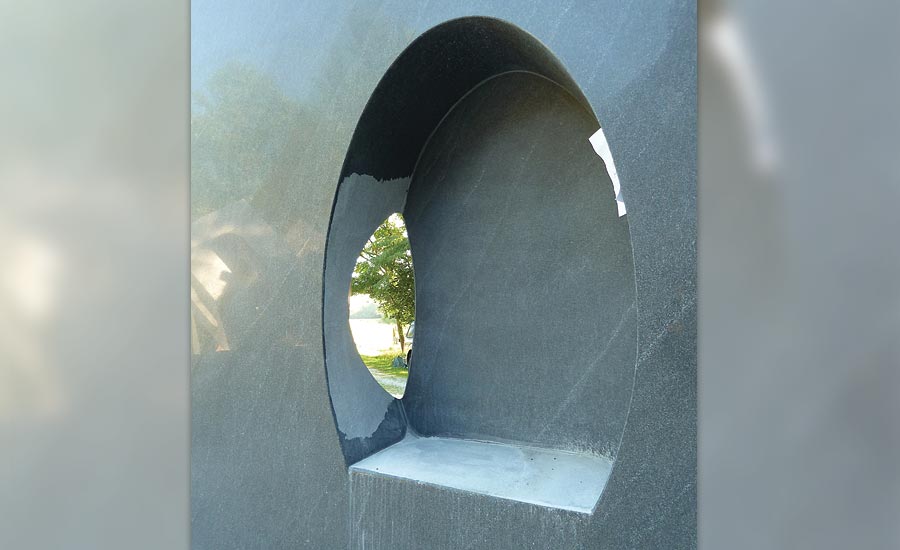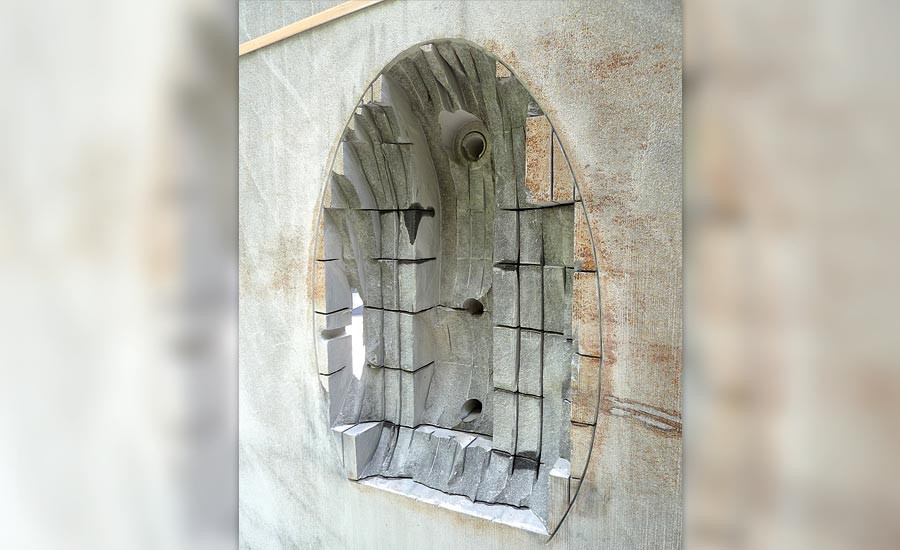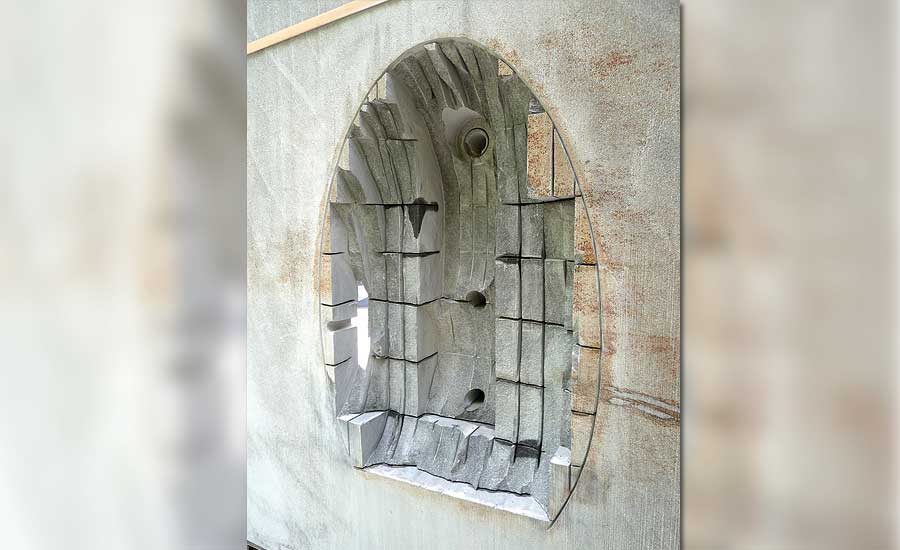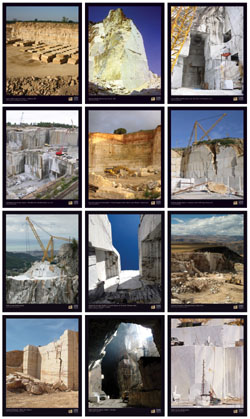Located in Dayton, OH, outside the downtown Dayton Metro Library, stands Jon Barlow Hudson’s 8-foot x 6-foot x 16-inch sculpture that captures the spirit of public service. Tim Riordan, a retired city manager for the city of Dayton, wanted to honor the public servants he had worked with during his career, so inspired by a friend who had commissioned a sculpture to gift the City of Dayton, which Hudson was also commissioned for, Riordan resolved to run a region-wide competition calling for sculpture proposals.
Riordan obtained a site for the sculpture from the city prior to the project beginning, located in Cooper Park in downtown Dayton. “I proposed the design that was chosen with the suggestion that there be quotes about public service engraved upon the surfaces,” said Hudson. “Riordan had a small committee to assist with the project, which included a local graphic design firm, Folio Design Haus, and during our meetings we worked out the quotes to include layout, graphic font and sizes.”
Hudson’s design included two seats carved into either side of the block and where the two seats interpenetrate they create a hold, through which the seated may converse. “This is the first main theme of my proposal; the idea that public service is involved with breaking through walls and communication,” said Hudson. “I also wanted the project to be interactive. This was also accomplished by engraving the quotes of the upper areas of the block so that the sentence continues on rough block, requiring the reader to walk around the block to read each quote — more interaction.”

About 20 years ago, Hudson learned that a lab at nearby Wright Patt Air Force Base was getting rid of several very large granite surface plates. “I obtained one and have been waiting for the right opportunity to create this idea with it,” said Hudson. “Patience was rewarded and this sculpture project was the perfect fit.” The block measured 96 x 16 x 80 inches, weighing around 13,000 pounds before cutting out the two seats. The surface plate is Pennsylvania granite and was made by the Lawley Granite Surface Plate Co. in Wyoming, PA.
Since the block was lying flat for Hudson, he used his Milwaukee core drill to commence carving out the first seat. “Once the preliminary holes were done, which also established the depth, I first used my Stihl 14-inch diamond disc gas-powered chop saw to cut out the upper level layers of the granite,” said Hudson. “The 4 ½-inch depth of the saw limits how deep one can go for each layer. I was able to cut out about four layers this way. Once this step was accomplished, I used both the 9-inch diameter diamond disc on my Bosch two-hand grinder, one from Germany via Miles Tools, to begin carving out the remaining sections. I also used a 4 ½-inch diamond disc on my Bosch mini-grinder to cut out the smaller bits as I got closer to the sides, of which you must take great time.

“About this time, I brought in the 4 ½-inch diameter diamond bullnose disc to cut the curved shape of the seat and begin removing stone from the curved surface of the seat side wall,” Hudson went onto say. “I continued this process down the 12 inches to the back wall of the seat. Once the gross shaping of the seat was accomplished, I used the bullnose to hone the wall surfaces, since they are curved, and the flat discs to hone the flat back wall of the seat. I then used the 4 ½-inch diameter Zec 36 grit disc to further hone the surfaces, then moved into the seven-stage diamond polishing discs on either my pneumatic polisher or my Alpha electric polisher.”
After completing the first seat, Hudson then brought in the Schaeffer crane company to stand the block up on his studio deck so that he could continue creating the second seat. This was a bit easier for him, as it was now vertical. While using the chop saw Hudson utilized the lifting capacity of his engine hoist to hold the weight of the chop saw while he guided it through its cuts, later commenting that it saved his back.

The biggest challenge for Hudson was that he is 5 feet, 7 inches tall and about 135 pounds, so throwing around a 20-pound chop saw and a seven-pound grinder all day was a bit of work. “Not to mention having to be 100% focused, as those diamond blades have to be spot on while cutting — both for safety and to maintain control of the tool and to get the precise cuts and edges required,” said Hudson. “Also, I did not want such a tool to jump back and bite me — which I have seen happen, but not experienced — I have all my fingers. The tools must be held in place and on the work in order for them to accomplish their work. So I guess I removed somewhere around 1,000 pounds of stone from each seat and then polished all those surfaces to about 3,000 grit.” About two-thirds of the first seat was done in roughly three months, but then Hudson had to wait out winter, and then approximately another six months, to finish everything else up.
“I think given the theme of the sculpture and Riordan’s official connections, we had a very good unveiling and ceremonial festivities,” said Hudson. “From the feedback I have received, most everyone seems to be very pleased with the honoring of Public Servants and they seem to enjoy the interactive aspects of the sculpture. So, I am very pleased indeed as I strive very hard to create sculptures that are meaningful both within what they embody or convey and how people experience them.”









